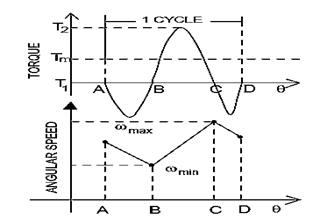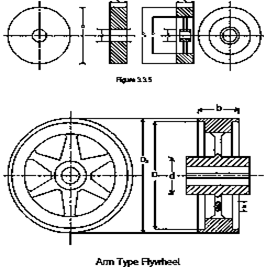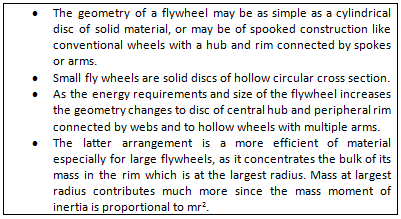SKEDSOFT
Introduction:
A flywheel is an inertial energy-storage device. It absorbs mechanical energy and serves as a reservoir, storing energy during the period when the supply of energy is more than the requirement and releases it during the period when the requirement of energy is more than the supply.
Flywheels-Function need and Operation:
- The main function of a fly wheel is to smoothen out variations in the speed of a shaft caused by torque fluctuations.
- If the source of the driving torque or load torque is fluctuating in nature, then a flywheel is usually called for.
- Many machines have load patterns that cause the torque time function to vary over the cycle. Internal -combustion engines with one or two cylinders are a typical example.
- Piston compressors, punch presses, rock crushers etc. are the other systems that have fly wheel.
Flywheel absorbs mechanical energy by increasing its angular velocity and delivers the stored energy by decreasing its velocity

Fig: Variation of crank angle with respect to torque and angular speed
Speed fluctuation
- The change in the shaft speed during a cycle is called the speed fluctuation and is equal
Fl = ωmax- ωmin
Co-efficient of speed fluctuation
- The above ratio is termed as coefficient of speed fluctuation Cf and it is defined as
Cf = (ωmax- ωmin)/ ω
Where ω is nominal angular velocity, and ωavg the average or mean shaft speed desired. This coefficient is a design parameter to be chosen by the designer.
Geometry of Flywheel

